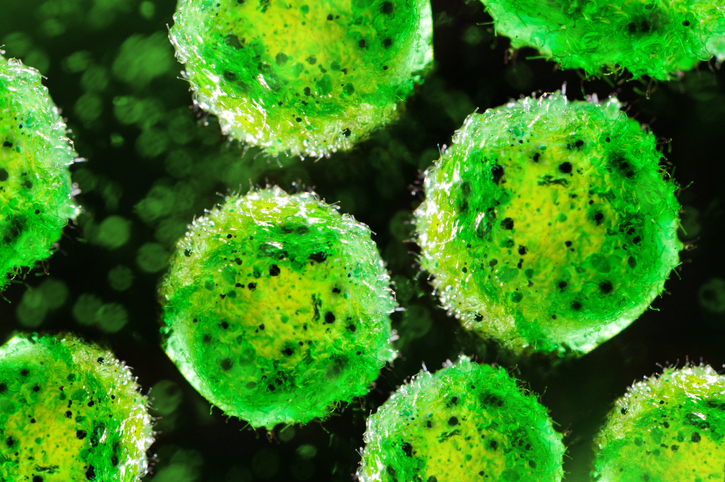Algae create a stockroom of ingredients. As Motasem Y. D. Alazaiza, PhD, an assistant professor in the department of civil and environmental engineering at A’Sharqiyah University in Ibra, Oman, and his colleagues note: “Algae have the potential to be used as a feedstock for the synthesis of valuable compounds and biofuels.” That’s just the start.
For one thing, algae can serve as a source of natural product–based therapies. “Fucoidan is widely used in cancer therapy, health products, and medicines,” Alazaiza and his colleagues report. “Brown algae is rich in Fucoidan.”
Algae can also be turned into biochar, which Alazaiza and his colleagues describe as “a carbonaceous substance that is created from algal biomass by thermal breakdown in an oxygen-absence environment.” Controlling the heating process impacts the characteristics of biochar, which can then be used in many ways, including CO2 adsorbents. Some forms of biochar also work well in bioremediation, such as removing pharmaceuticals from water supplies.
Drug delivery systems
Processing algae can also produce biopolymers, such as poly(3-hydroxybutyrate-co-3-hydroxyvalerate) (PHBV). As Alazaiza and his colleagues point out: “The unique PHBV physiochemical properties and slow rate degradation make them good candidates for drug delivery systems.”
In addition, such biopolymers are greener. Compared to petroleum-based polymers, “microalgae-driven biopolymers are thought to be the most sustainable biomass feedstock for the synthesis of biopolymers in the direction of a global circular bioeconomy,” Alazaiza and his colleagues note. “The time is right to conduct extensive testing of algal replacements for common and one-time-use polymers.”
These examples show just some of how algae can be turned into an arsenal of biotechnology tools. Sometimes, the algae itself can be used as a source of medicines. In other cases, algae can be transformed to address other applications. The resulting products can improve human health—both through clinical and environmental approaches.


